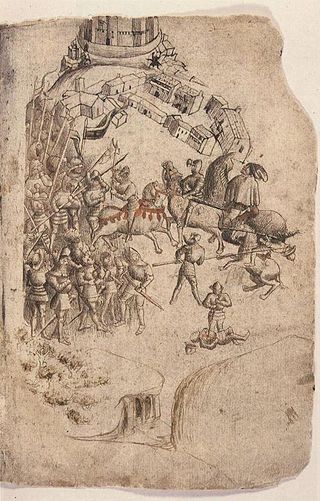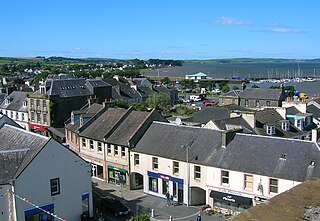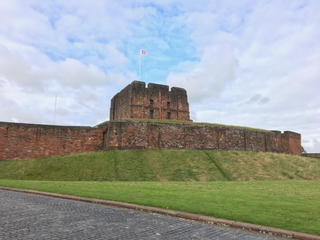Related Research Articles

Robert I, popularly known as Robert the Bruce, was King of Scots from 1306 to his death in 1329. Robert led Scotland during the First War of Scottish Independence against England. He fought successfully during his reign to restore Scotland to an independent kingdom and is regarded in Scotland as a national hero.

Year 1307 (MCCCVII) was a common year starting on Sunday of the Julian calendar.

The Wars of Scottish Independence were a series of military campaigns fought between the Kingdom of Scotland and the Kingdom of England in the late 13th and 14th centuries.

The Battle of Bannockburn was fought on 23–24 June 1314, between the army of Robert the Bruce, King of Scots, and the army of King Edward II of England, during the First War of Scottish Independence. It was a decisive victory for Robert Bruce and formed a major turning point in the war, which ended 14 years later with the de jure restoration of Scottish independence under the Treaty of Edinburgh–Northampton. For this reason, the Battle of Bannockburn is widely considered a landmark moment in Scottish history.

Stranraer, also known as The Toon, is a town in Dumfries and Galloway, Scotland, on Loch Ryan and the northern side of the isthmus joining the Rhins of Galloway to the mainland. Stranraer is Dumfries and Galloway's second-largest town, with a population of 10,593.

Edward Bruce, Earl of Carrick, was a younger brother of Robert the Bruce, King of Scots. He supported his brother in the 1306–1314 struggle for the Scottish crown, then pursued his own claims in Ireland. Proclaimed High King of Ireland in 1315 and crowned in 1316, he was eventually defeated and killed by Anglo-Irish forces of the Lordship of Ireland at the Battle of Faughart in County Louth in 1318.

Carlisle Castle is a stone keep medieval fortress located in the city of Carlisle near the ruins of Hadrian's Wall. First built during the reign of William II in 1092 and rebuilt in stone under Henry I in 1122, the castle is over 930 years old and has been the scene of many episodes in British history.
Marjorie of Carrick was Countess of Carrick, Scotland, from 1256 to 1292, and is notable as the mother of Robert the Bruce.
Robert de Brus, 6th Lord of Annandale, jure uxoris Earl of Carrick (1252–1292), Lord of Hartness, Writtle and Hatfield Broad Oak, was a cross-border lord, and participant of the Second Barons' War, Ninth Crusade, Welsh Wars, and First War of Scottish Independence, as well as father to the future king of Scotland Robert the Bruce.

Clan Bruce is a Lowlands Scottish clan. It was a royal house in the 14th century, producing two kings of Scotland, and a disputed High King of Ireland, Edward Bruce.

The Battle of the Pass of Brander in Scotland forms a small part of the wider struggle known as the Wars of Scottish Independence, and a large part of the civil war between the Bruce and Balliol factions, a parallel and overlapping conflict. It was a victory for King Robert the Bruce over the MacDougalls of Argyll, kinsmen of John Comyn, also known as the Red Comyn, who had been killed by Bruce and his adherents at Dumfries in 1306. The sources do not allow us to determine the date of the battle with any degree of precision: various dates between 1308 and 1309 have been suggested, though the late summer of 1308 would seem to be the most likely. Traquair dates it to August 1308.
Holders of the office of Lord Chamberlain of Scotland are known from about 1124. It was ranked by King Malcolm as the third great Officer of State, called Camerarius Domini Regis, and had a salary of £200 per annum allotted to him. He anciently collected the revenues of the Crown, at least before Scotland had a Treasurer, of which office there is no vestige until the restoration of King James I when he disbursed the money necessary for the maintenance of the King's Household.
Alexander de Brus, Dean of Glasgow, was a younger brother of King Robert I of Scotland, who supported his brother in the struggle for the crown of Scotland. He was captured by forces at Loch Ryan, Galloway, Scotland and later executed by the English.
Sir Thomas de Brus was a son of Robert de Brus, 6th Lord of Annandale and Margaret, Countess Of Carrick and thus a younger brother of King Robert I of Scotland. He supported his brother in the struggle against the English conquest, ultimately being captured by the MacDoualls at Loch Ryan, Galloway, Scotland and later executed by the English.

Sir John Menteith of Ruskie and Knapdale was a Scottish nobleman during the Wars of Scottish Independence. He is known for his capture of Sir William Wallace in 1305 and later joined with King Robert I of Scotland and received large land grants in Knapdale and Kintyre for his service. He is described as "guardian" of the Earldom of Menteith, as his great-nephew Alan II, Earl of Menteith was a minor at the time of the death of Alan I, Earl of Menteith.
Dungal MacDouall was a fourteenth-century Scottish nobleman, and a member of the MacDouall family. He was a vigorous opponent of Robert I, King of Scotland during the First War of Scottish Independence, and was knighted by Edward I, King of England for his services to the English Crown. Dungal was a close associate of John MacDougall, Lord of Argyll, whom he may have regarded as a kinsman. Dungal received grants of lands in England and Ireland after losing his own in Scotland. During his career, Dungal commanded Dumfries Castle and Rushen Castle, and is described by a contemporary record as "Captain of the army of Galloway". Dungal had a large family, and was succeeded by his son, Duncan.
The Battle of Loch Ryan was fought on 9/10 February 1307 during the Scottish Wars of Independence near Stranraer on Loch Ryan, Galloway, Scotland.
The Battle of Turnberry was fought in February 1307 during the Scottish Wars of Independence near Turnberry, Ayrshire, Scotland.
Sir Hugh Bisset was a 13th-14th century nobleman.
Events from the 1280s in the Kingdom of Scotland.
References
- Barbour, John, The Bruce, trans. A. A. H. Douglas, 1964.
- Sir Herbert Maxwell, The Chronicle of Lanercost, 1272-1346: translated with notes (1913).
- Watson, Fiona J. (1998), Under the Hammer: Edward I and Scotland, 1286-1306, Tuckwell, pp. 105–106[ ISBN missing ]